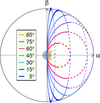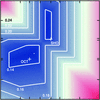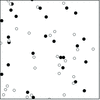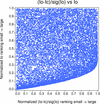issue contents
September 2014 issue

Cover illustration: Combined analysis, a global approach for quantitative determination of crystallite sizes and shapes, crystallographic texture and structural refinements, is extended to electron powder diffraction patterns and used to characterize nanoparticles in the form of powders and thin films [Boullay et al. (2014). Acta Cryst. A70, 448-456].
foundations
research papers
 access
access

book reviews



 journal menu
journal menu





























